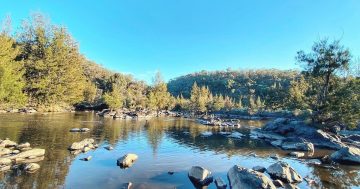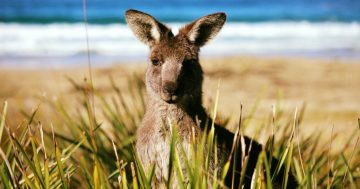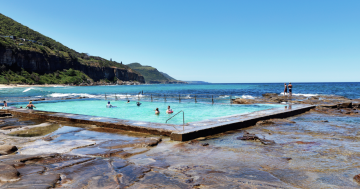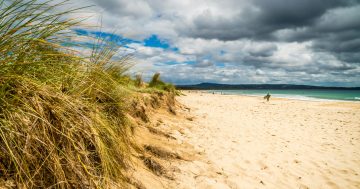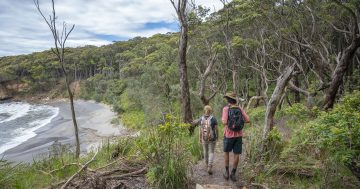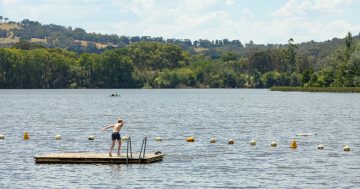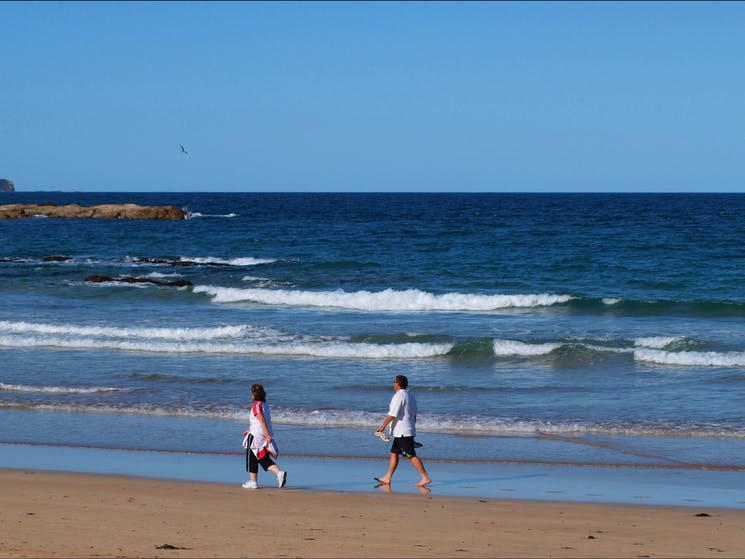
One woman drowned and a man was airlifted to Canberra after getting in trouble at Surf Beach on Easter Sunday. Photo: Destination NSW.
I was at the South Coast over Easter, just a few beaches down from where a Canberra woman tragically drowned after being caught in a rip. It was horrifying to learn of this death and, I think, quite sobering for many of us who were at the beach, enjoying the water as so many Canberrans do over holidays periods.
Even though Canberra isn’t a coastal town, the beach plays a significant role in our collective cultural life. The mass exodus on long weekends and over Christmas, with cars bearing Canberra license plates streaming over the Clyde and through Batemans Bay, shows that our proximity to the stunning beaches of the South Coast is part of the Canberra lifestyle for many.
But are we doing enough to ensure widespread water safety education across our community?
When my family migrated to Australia, none of us knew how to swim. My parents enrolled my siblings and me in swimming lessons, and my Dad took lessons as an adult because he wanted us to enjoy the beach and be safe with at least one adult supervising who could swim.
Most Aussies who have gone through school in this country will have the basics of swimming thanks to our PE curriculum – but swimming in a pool and swimming in the ocean are two very different things.
Understanding currents and rips are vital if you’re going to swim in the ocean regularly and, while I had some basic education about beach safety at school, I can’t remember anything so comprehensive that it carried with me into adulthood.
Outside of key summer periods, lifesavers aren’t at all beaches and, over Easter, while I was at Broulee Beach, there were crowds on the sand and in the waves and no lifesavers around. It occurred to me that if an emergency did happen, we would be hard-pressed to react swiftly.
I think water safety is as much an individual responsibility as it is a community one. But the fact is that many people aren’t aware of the risks because they simply haven’t been educated to know the impacts of rips, tides and currents on ocean swimming.
Should we have more widely promoted and easily available water safety courses? Or invest in water safety education for anyone who may not have experience with Australian beaches? Or is it just down to individual responsibility to manage their own safety in the water?
Or do we need to have lifesavers available throughout more of the year, not just at peak periods, and a larger investment to support lifesavers and volunteer lifesaving programs so resources aren’t stretched too thin?
There is an inherent risk when we enter the ocean, and unfortunately, accidents and loss of life are impossible to avoid completely. But some of these incidents could be managed with a better understanding of how to react when caught in a rip or when encountering a common issue while in the ocean.
The question might be, whose responsibility is it to make that education more accessible and widespread?












